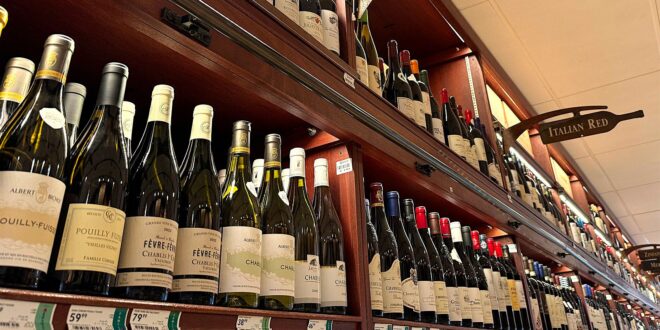[ad_1]
Beginning April 5, every bottle of wine imported into the United States will be more expensive, if the tariffs announced this week by President Donald J. Trump go into effect as planned. All foreign wines face minimum tariffs of 10 percent. And beginning April 9, several nations will be hit with even higher duties. Wines from France, Italy, Germany and Spain face tariffs of 20 percent. Wines from South Africa will be tariffed at 30 percent, and wines from Israel at 17 percent. Wines from Australia, New Zealand, Chile and Argentina all face 10 percent tariffs.
The tariffs are part of Trump’s pledge to rebalance global trade. “For decades, our country has been looted, pillaged, raped and plundered by nations near and far, both friend and foe alike,” the President said in an announcement from the White House Rose Garden on April 2.
For the wine industry, the tariffs are triggering fear of another blow to a sector already struggling. Foreign wineries, which have already been grappling with higher production costs and declining sales, are debating whether they can swallow some of the costs of the tariffs or whether they need to accept price increases that will make their products less competitive. A third option is to simply seek alternative markets, pulling their wines from American store shelves and restaurant lists.
How Were the Tariffs Calculated?
Members of the Administration have outlined two, somewhat conflicting, goals for the tariffs. Short-term, they hope the duties will force other countries to enter negotiations and lower barriers to American products in return for tariff relief. But they also speak of keeping the tariffs in place long-term, as both a source of revenue and to encourage companies to base operations and build factories in the U.S. The dueling purposes have many company owners uncertain as to how long tariffs will remain in place.
Before the President’s announcement, the Office of the U.S. Trade Representative released a report titled “2025 National Trade Estimate Report on Foreign Trade Barriers” detailing why the Administration believes other nations are treating the U.S. unfairly. The report cites other nations’ tariffs, but also details lengthy lists of “non-tariff barriers,” such as product regulations, labeling laws, intellectual property laws, subsidies, taxes and currency manipulation.
As one example, in the section on the European Union, the report objects to new ingredient labeling laws for wine sold in the E.U. and to the Europeans’ ban on imported wines using traditional terms like ruby, tawny and château, which have specific meanings in European appellations.
The Administration calculated each nation’s tariff rate in a two-part process. First, all nations face a baseline 10 percent rate, even nations like Brazil, which actually imports more from the U.S. than it exports to the U.S., and the uninhabited Heard Island, which exports nothing to America. Then, White House officials divided America’s trade deficit with each country by the total of that country’s exports to the U.S. That percentage was then halved. Thus, China faces tariffs of 34 percent, Vietnam 46 percent and the E.U. 20 percent. The idea is that if a nation has a trade surplus with the U.S., it must be due to unfair trade practices.
How Will this Impact Wineries, Restaurants and Wine Stores?
For foreign wineries and the importers who built their businesses on bringing those wines to the U.S., the tariffs are a painful hurdle after dealing with the past five years of pandemic shutdowns, supply chain snarls, inflation and declining wine sales. The E.U. tariff in particular will put further pressure on the U.S. imported wine segment, for which depletions declined 3.3 percent to just under 65 million cases last year, according to Impact Databank. Italy and France are the two largest imported wine segments in the U.S., and Spain, Germany, and Portugal are also among the top 10. While…
[ad_2]Source : https://www.winespectator.com/articles/trump-tariff-plan-hits-every-imported-bottle-of-wine
